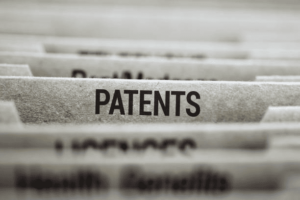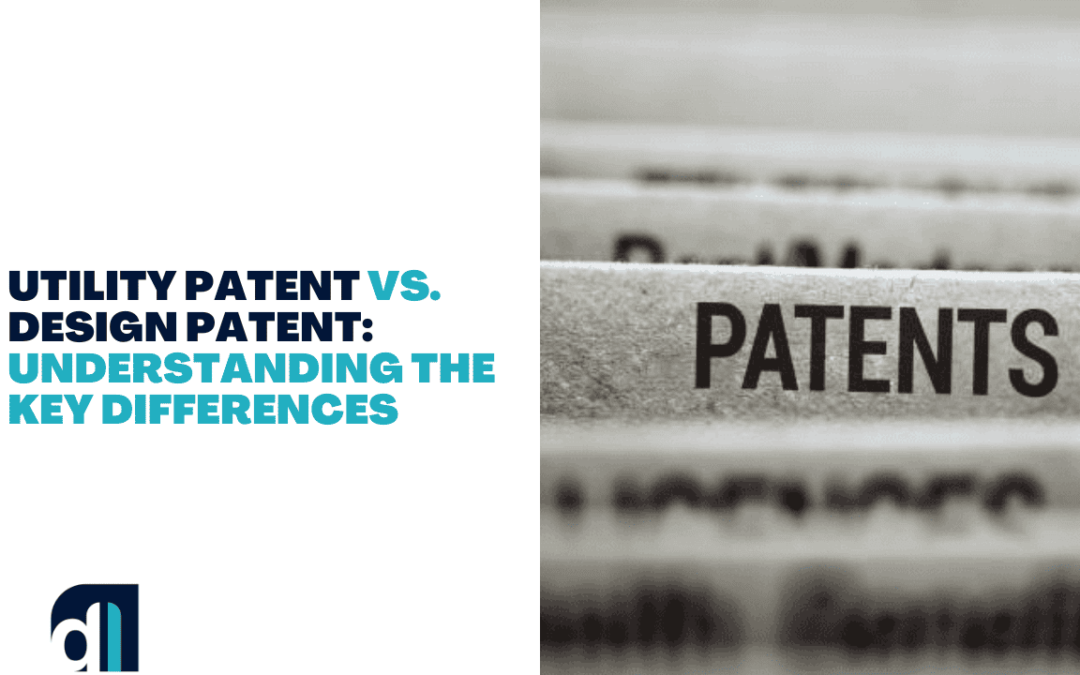To secure patent protection inventors and businesses need to determine whether their invention requires a utility patent or a design patent according to its specific nature.
These two protection mechanisms operate differently even though they offer legal defense.
This article investigates the separation between utility patents and design patents alongside their protective scope and methods for choosing suitable patent types for inventions.
- What Is a Utility Patent?
A utility patent grants protection to the operational aspects of an invention along with its usage methods.
Key Features of a Utility Patent
-
- A utility patent contains specific characteristics that protect the functional aspects of the invention.
- Covers functionality – Protects how a product works or is used.
- The patent protects different types of inventions from basic machines to chemical compounds along with software programs and medical equipment.
- A detailed application process requires technical descriptions, drawings, and claims for full submission.
- The United States Patent and Trademark Office (USPTO) conducts a thorough evaluation of the patent.
- The protection period of a utility patent starts from the filing date and extends for 20 years while continued validity requires payment of maintenance fees.

What Is a Design Patent?
Design patents serve to protect inventions by safeguarding their visual features along with ornamental elements but not their operational aspects.
Innovations protected by design patents receive protection for their new and unique visual elements which include shapes patterns and surface designs.
-
- A patent design contains two essential characteristics.
- The patent system protects only visual aspects instead of operational elements.
- The patent scope depends on high-quality illustrations included in the application.
- The application review process for design patents occurs at a faster rate since exam requirements remain simple.
- Valid for 15 years from the grant date, with no maintenance fees.
Since design patents are limited to ornamental features, they do not protect against competitors creating functionally similar products with different appearances.
Key Differences Between Utility and Design Patents
| Feature | Utility Patent | Design Patent |
| Purpose | Protects functionality, method, or structure. | Protects appearance and aesthetic design |
| Examples | Software, mechanical devices, medical devices. | Smartphone designs, furniture aesthetics |
| Examination | Requires detailed claims and extensive USPTO review. | Less complex review focusing on visual design |
| Duration | 20 years from filing (maintenance fees required) | 15 years from issuance (no maintenance fees) |
| Protection Scope | Broad, covering how the invention works. | Narrow, covering only the ornamental design |
| Infringement Consideration | Based on functional similarities | Based on the substantial similarity in design |
Both types of patents serve different but complementary purposes. Utility patents offer stronger and broader protection, while design patents ensure aesthetic uniqueness remains safeguarded.

Can You Apply for Both?
The majority of inventors file applications for both utility and design patents to obtain complete protection for their innovations. A utility patent provides functional protection to inventions alongside design patent protection that defends their distinctive looks.
A dual-patent strategy ensures better intellectual property rights because it defends both functional aspects and visual characteristics against product duplication.
A smartphone typically receives utility patents for processing technology while simultaneously obtaining design patents for its exterior design.
The combination of utility and design patents protects kitchen appliances for both their operational elements and their contemporary visual design aspects while running shoes can obtain dual patents for their shock absorption technology combined with their special sole design.
Understanding the difference between utility patents and design patents is essential for protecting your invention effectively. If your product has both functional innovations and aesthetic uniqueness, applying for both types may provide comprehensive legal protection.
Before filing, consider consulting a patent attorney to determine the best patent strategy based on your specific invention.
The right to patent protection can help safeguard your intellectual property, prevent competitors from profiting off your ideas, and enhance your business’s competitive edge.
How Our Patent Attorney Can Help You
Our attorneys evaluate your invention and help determine whether a utility patent, a design patent, or both are the best options for protecting your intellectual property.
- Conducting a Thorough Patent Search
We perform comprehensive prior art searches to identify existing patents and improve your application’s chances of approval.
- Drafting and Filing Your Patent Application
Our team prepares detailed and precise patent applications, ensuring that your claims are strong, well-defined, and legally defensible.
- Managing Patent Disputes and Infringement Issues
If someone infringes on your patent rights, we provide legal representation to enforce your intellectual property and take appropriate action.
- Providing Ongoing Patent Guidance
We offer strategic advice on maintaining and enforcing your patent, helping you maximize its value in the marketplace.
If you need assistance with securing a utility or design patent for your invention, call 773-234-1139 for a free consultation. Our experienced attorneys at Drishti Law will guide you through the patent application process and help protect your intellectual property from infringement.

Sahil Malhotra
Sahil Malhotra is an Intellectual Property Attorney, who founded Drishti (“vision”) law because of his vision in protecting dreams and ideas.
He provided individuals and small businesses with an opportunity to enhance their IP’s value by helping them register trademarks and successfully argue against office actions. In addition to his training and experience, he has been deeply involved in the multifaceted IP portfolio at UIC and continues to be associated with IP organizations and conferences.
To know more about Sahil Malhotra — Click Here
You may follow Sahil Malhotra on Facebook: Sahil Malhotra and on Instagram: @Sahil Malhotra

